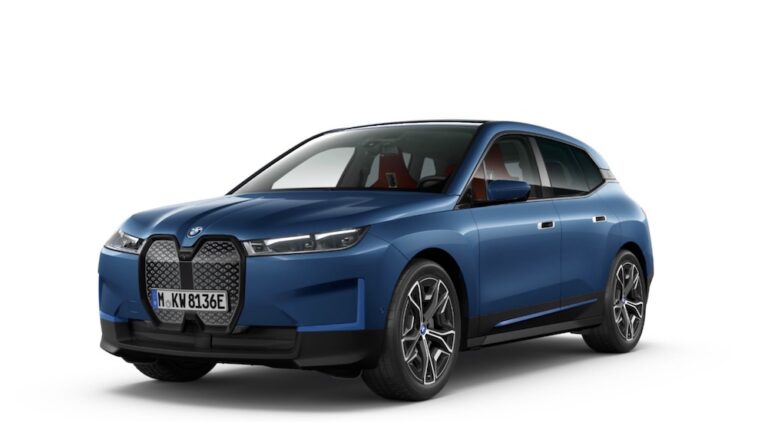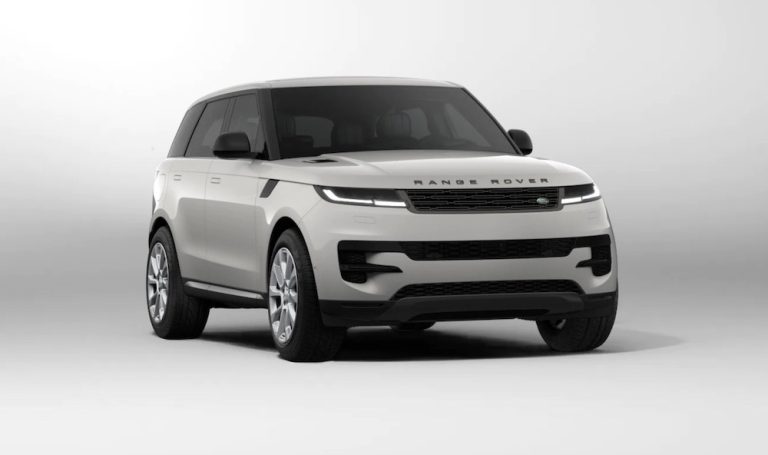Overview
Mercedes-Benz, simply known as Mercedes, is a leading global luxury automative manufacturer based in Germany. The company is headquartered in Stuttgart and is famed for its high quality passenger vehicles, to include the Mercedes-Maybach. However, the company is also a leader in manufacturing commercial vehicles, to include the plug-in Mercedes eSprinter commercial EV and the plug-in Mercedes eVito electric van.
Mercedes-Benz EQ is the sub-brand used by the company for its portfolio of battery-electric vehicles (BEVs), plug-in hybrid electric vehicles (PHEVs) and mild hybrids. The pure electric cars are branded as EQ, while the PHEVs are branded as EQ Power. The mild hybrid vehicles are branded as EQ Boost. The PHEV portfolio includes:
- Mercedes A-Class Hatchback PHEV
- Mercedes A-Class Saloon PHEV
- Mercedes B-Class Hatchback PHEV
- Mercedes E-Class Saloon PHEV
- Mercedes E-Class Estate PHEV
- Mercedes S-Class Saloon PHEV
- Mercedes CLA Coupé PHEV
- Mercedes CLA Shooting Brake PHEV
- Mercedes GLA SUV PHEV
- Mercedes GLC SUV PHEV
- Mercedes GLC Coupé PHEV
- Mercedes GLE SUV PHEV
- Mercedes GLE Coupé PHEV
Electric Cars: The Basics
For those of you new to zero-emission electric driving, we recommend a read of the following articles:
Sign up to the e-zoomed Electric Living newsletter
The Mercedes-Benz GLE 350 de Coupé PHEV
The Mercedes-Benz GLE (formerly M-Class) premium mid-sized SUV was introduced in 1997. It is currently in its fourth generation, which was unveiled at the 2018 Paris Motor Show. The GLE PHEV Coupé is only available as a diesel/electric variant. The Coupé is distinctive in its exterior sportier styling compared to the standard GLE SUV. The sloping roofline adds to the appeal of the PHEV.
For a start, the GLE Coupé PHEV does stand out from the average plug-in hybrid electric vehicle, given the 31.2 kWh onboard EV battery. In general, most PHEVs tend to have an EV battery smaller than 15 kWh. With the larger EV battery, the GLE 350 de plug-in hybrid SUV also commands a higher EV range, in comparison to other PHEVs.
Mercedes-Benz claims the PHEV has a zero-emission electric range up to 54 miles (WLTP certified). Real-world EV range will be lower, impacted by a number of factors, to include: driving profile, braking profile, road conditions, weather conditions, passenger load, etc. Either way, the EV should be able to deliver close to 45 miles with zero-tailpipe emissions. This should be sufficient for most urban needs and also for shorter motorway driving.
The all-wheel drive Mercedes PHEV can be charged using both AC and DC charging. The EV can be charged up to 60 kW DC (10% – 80%: 20 mins). For AC charging, the electric car has a 7.4 kW onboard charger, allowing the EV to be charged up to 100% via a domestic single-phase EV charger in 3 hours and 30 minutes.
The 100 kW electric motor is coupled with a 2.0-litre (4-cylinder) diesel engine (a petrol variant is not available). Overall performance of the GLE PHEV is respectable: 0-62 mph in 6.9 seconds and a 130 mph top speed (320 bhp/ 700 Nm). Given the hybrid engine configuration, the plug-in SUV is more economical to drive compared to the conventional internal combustion engine (ICE) variant.
Mercedes claims a fuel economy up to 313.9 mpg. Of course, the more the vehicle is driven on the pure electric mode, the greater the potential for fuel economy and savings. If the vehicle is driven primarily using the combustion engine, expect a fuel economy closer to 35 mpg.
The EV is a good blend of luxury and practicality. The SUV can seat up to 5 adults, with ample headroom and legroom for adults seated on the rear seats, despite the sloping roofline (7 seater option not available). However, the rear-view is slightly restricted compared to the standard GLE SUV. Making use of the reversing camera will be helpful.
Despite the large onboard EV battery, the EV has up to 510 L cargo volume. The PHEV is technology-packed, to include the Mercedes-Benz User Experience (MBUX) infotainment system that used Artificial Intelligence (AI) to predict the drivers behaviour and needs.
The GLE plug-in hybrid is also well suited for company car drivers, given the low tailpipe emissions (24g CO2/km) and lower BiK tax liability (8%). The EV does not qualify for the UK government plug-in car grant (PiCG). Bottom-line, electric driving is good for the environment and the wallet.
You can lease electric vehicles (EVs) via e-zoomed at very competitive prices!
| PROS | CONS |
|---|---|
| An efficient vehicle. Claimed fuel economy up to 313.9 mpg | Only available as a diesel/electric PHEV |
| Good EV battery size and EV range (up to 54 miles) | An expensive PHEV. Cheaper alternatives available |
| Low tailpipe emissions (24g CO2/km) | Onboard charger limited to single-phase AC charging (7.4 kW AC) |
The Mercedes-Benz GLE 350 de Coupé PHEV (credit: Mercedes)
| At A Glance | |
|---|---|
| EV Type: | Plug-In Hybrid Electric Vehicle (PHEV) |
| Body Type: | Coupé |
| Plug-In Car Grant (PiCG): | Not Available |
| Engine: | Diesel-Electric |
| Available In UK: | Yes |
| Variants (1 Option) |
|---|
| Mercedes-Benz GLE 350 de AMG Line Premium Plus (from £76,080) |
| EV Battery & Emissions | |
|---|---|
| EV Battery Type: | Lithium-ion |
| EV Battery Capacity: | Available in one battery size: 31.2 kWh |
| Charging: | 60 kW DC charging (10%-80%: 20 mins). Onboard charger 7.4 kW AC |
| Charge Port: | Type 2 |
| EV Cable Type: | Type 2 |
| Tailpipe Emissions: | 24g (CO2/km) |
| EV Battery Warranty: | 6 years or 62,000 miles |
| Average Cost Of Residential Charging | |
|---|---|
| Battery net capacity : 8.8 kWh | £1.27 |
| Battery net capacity : 11.6 kWh | £1.67 |
| Battery net capacity : 12.0 kWh | £1.73 |
| Battery net capacity : 13.10 kWh | £1.89 |
| Battery net capacity : 14.10 kWh | £2.03 |
- Note 1: The average cost of residential electricity in the UK varies depending on the region, supplier and type of energy used. An average for the UK is 14.40 p/kWh.
- Note 2: Not all EV manufactures make available the data on net EV battery capacity, and in a number of instances the EV battery capacity advertised, does not state if it is gross or net capacity. In general, usable EV battery capacity is between 85% to 95% of the gross available capacity.
| Charging Times (Overview) | |
|---|---|
| Slow charging AC (3 kW – 3.6 kW): | 6 – 12 hours (dependent on size of EV battery & SOC) |
| Fast charging AC (7 kW – 22 kW): | 3 – 8 hours (dependent on size of EV battery & SoC) |
| Rapid charging AC (43 kW): | 0-80%: 20 mins to 60 mins (dependent on size of EV battery & SoC) |
- Note 1: SoC: state of charge
| Dimensions | |
|---|---|
| Height (mm): | 1730 |
| Width (mm): | 2157 |
| Length (mm): | 4939 |
| Wheelbase (mm): | 2935 |
| Turning Circle (m): | 11.8 |
| Boot capacity (L): | 510 |
| GLE 350 de 4MATIC | |
|---|---|
| EV Battery Capacity: | 31.2 kWh |
| Pure Electric Range (WLTP): | 53 – 54 miles |
| Electric Energy Consumption (kWh/100km): | 25.9 |
| Fuel Consumption (MPG): | 313.9 |
| Charging: | 60 kW DC charging (10%-80%: 20 mins). On-board charger 7.4 kW AC |
| Top Speed: | 130 mph (electric: 53-62 mph) |
| 0-62 mph: | 6.9 seconds |
| Drive: | All-wheel drive (AWD) |
| Electric Motor (kW): | 100 |
| Max Power (hp): | 320 (system output) |
| Torque (Nm): | 700 (system output) |
| Transmission: | Automatic |
| Seats: | 5 |
| Doors: | 5 |
| Kerb Weight (kg): | 2,690 |
| Colours: | 11 |
| NCAP Safety Rating: | Five-Star |
While e-zoomed uses reasonable efforts to provide accurate and up-to-date information, some of the information provided is gathered from third parties and has not been independently verified by e-zoomed. While the information from the third party sources is believed to be reliable, no warranty, express or implied, is made by e-zoomed regarding the accuracy, adequacy, completeness, legality, reliability or usefulness of any information. This disclaimer applies to both isolated and aggregate uses of this information.









































